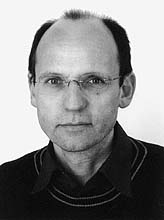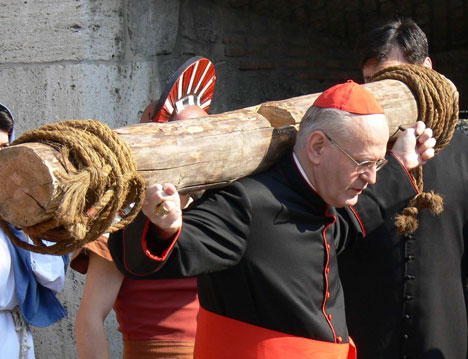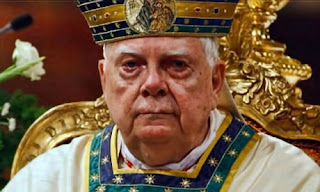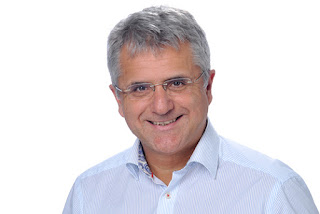C9, the Trojan Horse for the Synodalist Elite at the Conclave
"There's no risk, I'm very calm." The Cardinal of Bologna, Matteo Zuppi, appeared very calm yesterday afternoon on the streets of Rome. He was on his way to the barber's, as the president of the Italian Bishops' Conference hadn't even had time to get his hair done since the death of Pope Francis.
Zuppi, one of the papal candidates most frequently mentioned, usually arrives at the general congregation meetings driving a small white Fiat, in true Bergoglio style. And he walks alone down the street, without the cardinal's trappings (as Cobo does, for example, in the area of Montserrat and Campo di Fiore), trying to go unnoticed. He doesn't succeed.
"Just in case the Conclave lasts a couple of months, at least I'll dress up a bit," Zuppi joked to the group of journalists who approached him. The president of the Italian bishops played it down, although it's true His name continues to be widely considered a possible Papal candidate, especially if, as it seems, the "Parolin effect" fades after the first (and third) ballots. There he could have his chance, especially if the always difficult unity among Italians prevails. Zuppi, along with Prevost, Aveline, Artime, and some other surprises, could emerge after a first ballot in which everyone assumes Parolin and Tagle will garner the majority of the vote.
"We will certainly find the Pope that the Church and the world need at this moment," reflects Cardinal Omella, one of the best kingmakers of this pre-conclave, before entering the final congregation. "This afternoon we will lock ourselves in Santa Marta, out with phones and tablets, and do our own thing, to pray and vote." "Let's not give in to the temptation of polarization," adds Zuppi before entering the barbershop. A Papal haircut?
During Francis's pontificate, the C9 was established, and lay men (Ruffini) and women (Simona Brambilla) were appointed as prefects, a process that must continue and was also discussed in the meetings prior to the conclave.
Whoever it is, the fact is that Francis's legacy must continue. And, to a large extent, beyond the name, they will have to strengthen that style of synodal, participatory, and inclusive government. During his pontificate, the C9 was established, and lay men (Ruffini) and women (Simona Brambilla) were appointed as prefects, a process that must continue and was also discussed in the meetings prior to the conclave. In fact, women have already participated in the C9, and had Francis not died, the "mayor" of the Vatican, Raffaella Petrini, would have been part of it.
The C9, and the three women who participated in it
The consensus could lie in the creation of a sort of permanent "advisory council," made up of cardinals from all continents and experts in various fields, from Theology to Communication, Economics, Culture, the Environment, and International and Interfaith Relations. A "Council of Ministers," presided over by the Pontiff, that could count on the permanent presence of the best experts—many of them lay people, many of them also women—to delve deeper into the participatory dynamics of an institution that is called to continually reform itself. And to listen to the heartbeat of the world in which it lives. Will it succeed? To a large extent, it will depend on what happens from this Wednesday until the white smoke.










.jpeg)

Comments